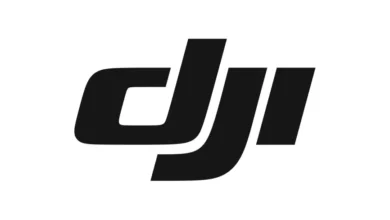Blog: How to Combat the 4 Biggest Challenges 2020 Will Leave Behind
 Mills
MillsRV manufacturers and sellers are still recovering from a number of blows over the past 18-plus months: changing buying behaviors among their target market, the ongoing impact on the supply chain and the labor shortage reality across the nation.
Element Three, a marketing consultancy that works with some leading RV brands, wanted to find out what the biggest lingering issues were as a result of these problems, and suggest ways to move forward. We talked to 20 manufacturing companies ranging from Fortune 500 to regional leaders across the U.S. and pinpointed the four most pressing issues.
- Changing Buyer Behaviors: Digital transformation has changed the way people buy. Buyer behavior has been incrementally changing for manufacturers, but COVID-19 accelerated the shift to a digital-first buying process. This left many RV providers scrambling to find a way to not just promote, but sell their products online.
Manufacturers we talked to now understand their buyers want to connect through digital channels, so those buyers can control the pace of the buying process. This is a major shift in the RV industry, as it was traditionally believed that for more expensive or luxury purchases, people wanted to talk to a sales professional and see the product in person before making a purchase.In order to adapt to this change, RV manufacturers must enhance the customer experience they’re providing online.
According to the Manufacturing Pulse Survey from PricewaterhouseCoopers (PwC), over 50 percent of manufacturing leaders are investing greater amounts in digital channels. Websites need to be easy to navigate, virtual product demonstrations should be as thorough as possible, and greater access to information should be provided throughout the buyer journey. Sales teams need to be trained to nurture purchases both in-person and online, as the hybrid buying trend is unlikely to go away.
2. Uncertainty Around Events: Historically, events were a major channel for manufacturers to showcase their products and to find new suppliers. This year, more events are switching from virtual back to in-person, but manufacturers we talked to are not sure whether it makes sense to attend in person, sponsor, or skip events altogether. There’s uncertainty about how many people will actually attend, and the past year showed that events may not be as important as previously thought.
This year and moving forward, keep a closer eye on the results achieved from attending and exhibiting at trade shows. Now is a good time to evaluate the business impact of attending events. Create realistic expectations for events, and right-size budgets to mirror the uncertainty that still remains.
Attending or exhibiting at a virtual event you haven’t attended before may make sense, as the cost of entry may be lower than when it’s hosted in-person. This can allow you to gauge the benefit of the event before costs potentially rise next year and beyond. Still, don’t fill your pipeline as fully with events in the way you have in the past because the attendee list is smaller (as much as 80 percent attrition in some cases).
3. Labor Shortages: The manufacturing industry has been hit particularly hard by the inability to hire enough people. Illness, temporary shut-downs, boosted unemployment benefits, job competition, and people choosing to leave the workforce are all reasons for the lack of labor.
Manufacturers are used to dealing with labor shortages, but 2020 brought that to new heights. To address this challenge, focus on attracting potential employees with the same intention you attract potential customers. This includes offering a competitive wage with benefits that can stand up against the competition, but it also includes sharing more about your company, what makes it unique, and what the experience is when working there. Educate applicants on your brand and business and clearly articulate the benefits of being part of your organization. A reputable, inclusive culture can give you a leg up in the hiring process.
4. Supply Chain Disruptions: Manufacturers we spoke to indicated the supply chain can handle one or two disruptions – not four. The catastrophic events of 2020 have found manufacturers struggling to keep up with the abundance of demand.
The most important aspect of dealing with supply chain disruptions is keeping customers well informed. People are largely understanding of the delays required for products, including RVs and their components. Keep customers updated on timelines and future availability. Do not stop taking orders or marketing products, and increase your communication cadence so your customer gets to experience the excitement of their purchase longer before actually receiving the unit.
No doubt 2020 brought many critical issues that are still being worked out in 2021. By pinpointing each problem and tackling it individually, RV manufacturers and sellers set themselves up for stability now and growth in the future.
Joe Mills is the Business Development Manager at Element Three, a marketing consultancy. Read the full Manufacturing Trend Report here.

